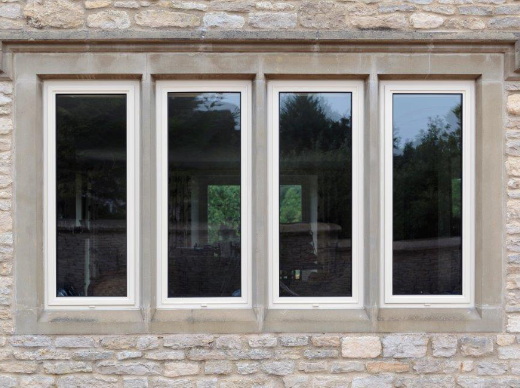English


Views: 222 Author: Dream Publish Time: 2025-01-22 Origin: Site











Content Menu
● Understanding the Purpose of Aluminum Foil on Windows
● How Does Aluminum Foil Work?
● Benefits of Using Aluminum Foil on Windows
● Drawbacks of Using Aluminum Foil on Windows
● Best Practices for Using Aluminum Foil on Windows
● Alternatives to Aluminum Foil
● Practical Applications of Aluminum Foil on Windows
● FAQ
>> 1. Is it safe to put aluminum foil on my windows?
>> 2. Will using aluminum foil void my window warranty?
>> 3. How effective is aluminum foil at blocking heat?
>> 4. Can I use regular kitchen-grade aluminum foil?
>> 5. What are some alternatives to using aluminum foil?
Aluminum foil, a common household item, has found its way into various unconventional uses, one of which is covering windows. While it may seem odd to some, many people have adopted this practice for a variety of practical reasons. This article explores the reasons why people put aluminum foil on their windows, the benefits and drawbacks of doing so, and alternative solutions for achieving similar effects.

People use aluminum foil on windows primarily for three reasons:
- Temperature Control: Aluminum foil can help regulate indoor temperatures by reflecting sunlight and reducing heat gain in the summer.
- Light Blocking: It serves as an inexpensive alternative to blackout curtains, effectively blocking out light for better sleep or privacy.
- Cost-Effective Privacy: For those on a budget, aluminum foil provides a quick and inexpensive way to maintain privacy without investing in expensive window treatments.
Aluminum foil works by reflecting radiant heat and light. When sunlight hits the foil-covered window, the reflective surface bounces back a significant portion of the solar radiation, preventing it from entering the home. This helps to keep indoor temperatures cooler during hot weather.
The reflective properties of aluminum foil make it an effective insulator against heat. According to experts, aluminum can reflect about 95% to 98% of infrared radiation. This means that when sunlight strikes a window covered with aluminum foil, most of that energy is reflected away from the home rather than being absorbed by the glass and subsequently heating up the interior space.
1. Cost-Effective Solution: Aluminum foil is inexpensive and widely available, making it an accessible option for many homeowners looking to improve their home's energy efficiency without breaking the bank.
2. Easy Installation: Applying aluminum foil to windows requires minimal tools and effort. It can be cut to size and affixed using tape or adhesive, making it a quick DIY project.
3. Temporary Fix: If you need a short-term solution for heat or light issues (such as during a heatwave), aluminum foil can be easily applied and removed without damage to the window itself.
4. Versatile Use: Beyond windows, aluminum foil can also be used in various applications around the home, such as lining walls or covering vents to reflect heat away from living spaces.
5. Environmental Benefits: By reducing reliance on air conditioning or heating systems through improved insulation, using aluminum foil can contribute to lower energy consumption and reduced greenhouse gas emissions.
6. UV Protection: Aluminum foil can block harmful ultraviolet (UV) rays that can fade furniture and flooring, providing an added layer of protection for interior spaces.
7. Noise Reduction: While not its primary function, aluminum foil can help reduce noise from outside by acting as a barrier against sound waves.
8. Enhanced Privacy: By covering windows with aluminum foil, individuals can prevent outsiders from seeing into their homes while maintaining a comfortable indoor environment.
1. Aesthetic Concerns: Covering windows with aluminum foil can look unattractive from both inside and outside the home. This may not be suitable for neighborhoods with strict aesthetic guidelines or homeowners' associations.
2. Potential Damage to Windows: If applied incorrectly (e.g., on the inside of double-pane windows), aluminum foil can cause thermal stress due to heat buildup between the glass panes. This can lead to cracking or breaking of the glass over time.
3. Residue Issues: Some users report sticky residue left behind after removing aluminum foil from windows, which can be difficult to clean off.
4. Limited Longevity: Aluminum foil is not designed for long-term use; it can tear or degrade over time due to exposure to sunlight and weather conditions.
5. Void Warranties: Many window manufacturers warn against using materials like aluminum foil on their products as it may void warranties due to potential damage caused by thermal stress.

If you decide to use aluminum foil on your windows, here are some best practices to follow:
1. Apply Outside Whenever Possible: For maximum effectiveness in reflecting heat away from your home, apply aluminum foil to the exterior side of your windows rather than the interior.
2. Use Cardboard Backing: To prevent potential damage from heat buildup, consider placing cardboard between the window and the aluminum foil. This acts as an additional insulator and helps protect your glass from excessive heat.
3. Choose Heavy-Duty Foil: Opt for heavy-duty aluminum foil instead of regular kitchen-grade foil for better durability and insulation properties.
4. Measure Accurately: Measure each window accurately before cutting your aluminum foil pieces to ensure a snug fit without gaps that could allow heat transfer.
5. Secure Properly: Use tape or adhesive along the edges to secure it firmly and prevent peeling due to wind or moisture.
6. Monitor Performance: After installation, monitor indoor temperatures over several days to assess effectiveness and make adjustments if necessary.
While aluminum foil is a popular choice for many homeowners seeking temporary solutions for heat control and privacy, there are several alternatives that may offer similar benefits without some of the drawbacks:
- Reflective Window Films: These films are designed specifically for windows and can provide effective insulation while maintaining aesthetics without compromising visibility or light quality.
- Blackout Curtains: These are available in various styles and colors and offer excellent light-blocking capabilities while enhancing room decor.
- Thermal Drapes: Insulated curtains that help keep homes warm in winter and cool in summer by reducing heat transfer through windows.
- Cellular Shades: Designed with air pockets that provide excellent insulation while also blocking light effectively.
- Outdoor Awnings or Shades: Installing outdoor awnings over windows provides shade from direct sunlight without obstructing views while keeping your home cooler during hot weather.
In addition to its benefits in temperature control and privacy enhancement, there are several practical applications where using aluminum foil on windows proves advantageous:
1. Emergency Situations: During power outages or extreme weather events when air conditioning is unavailable, aluminum foil can serve as an immediate solution for cooling down living spaces by blocking out sunlight effectively.
2. Seasonal Use: Homeowners may choose to apply aluminum foil seasonally—removing it during cooler months when natural sunlight is beneficial for warming indoor spaces while applying it again in summer months when cooling is necessary.
3. DIY Projects: Creative individuals have utilized aluminum foil in various DIY projects beyond window coverings—such as crafting reflective surfaces for photography or creating art installations that play with light reflection dynamics.
4. Camping Solutions: Campers often use aluminum foil as a lightweight solution for insulating tents or RVs against extreme temperatures by reflecting sunlight away during hot days or retaining warmth during cold nights.
5. Gardening Uses: Some gardeners place aluminum foil around plants as a deterrent against pests while simultaneously reflecting light towards plants that require more exposure—a dual-purpose application that enhances gardening efforts.
Using aluminum foil on windows is a practical solution for many homeowners looking to manage indoor temperatures, block light, and maintain privacy without spending much money. While it offers several benefits such as cost-effectiveness and easy installation, there are also potential drawbacks including aesthetic concerns and possible damage to windows if not applied correctly.
For those considering this method, following best practices can help maximize its effectiveness while minimizing risks. Additionally, exploring alternative solutions may provide more permanent options that enhance both comfort and aesthetics in your living space.

Yes, it is generally safe as long as you apply it correctly—preferably on the outside—and take precautions against potential thermal stress on double-pane glass.
Yes, many manufacturers warn that applying materials like aluminum foil may void warranties due to potential damage caused by thermal stress.
Aluminum foil reflects about 95% of infrared radiation when applied correctly, making it quite effective at reducing heat gain inside homes during hot weather.
While you can use regular kitchen-grade foil, heavy-duty aluminum foil is recommended for better durability if you plan on leaving them up for extended periods due to its thickness and strength against tearing.
Alternatives include reflective window film, blackout curtains, cellular shades, outdoor awnings that provide similar benefits without compromising aesthetics.
[1] https://www.weiye-aluminium.com/does-putting-aluminum-foil-on-windows-help.html
[2] https://www.housedigest.com/1360647/aluminum-foil-lining-windows-mistake/
[3] https://www.windowfilm.co.uk/commercial/window-foils-and-glass-films
[4] https://www.weiye-aluminium.com/why-do-people-put-aluminum-foil-on-their-windows.html
[5] https://www.youtube.com/watch?v=UDcvB5selMQ
[6] https://www.3m.com.hk/3M/en_HK/home-window-solutions-hk/envision-window-film/
[7] https://www.chaluminium.com/top-8-functions-of-aluminum-foil-on-windows
[8] https://insulationgo.co.uk/blog/how-to-install-a1-foil-faced-insulation-the-right-way/
[9] https://www.3m.com.hk/3M/en_HK/home-window-solutions-hk/
[10] https://jupyter.alphabeta.io/from7/the-benefits-and-applications-of-foil-on-windows.html
[11] https://www.youtube.com/watch?v=pCg0XiLrrTs
[12] https://www.reddit.com/r/DIY/comments/14xf1nx/would_it_be_bad_if_i_covered_my_window_with/
[13] https://alfipa.com/articles/insulation-with-aluminium-foils/
[14] https://www.kingchuanpackaging.com/exploring-aluminum-foil-unexpected-uses-health-effects-and-suggestions-for-reducing-harm/
[15] https://www.instructables.com/Energy-saving-window-insulation/
[16] https://www.gm-cx.com/news/Aluminum-Foil-on-Windows-Pros-and-Cons.html
